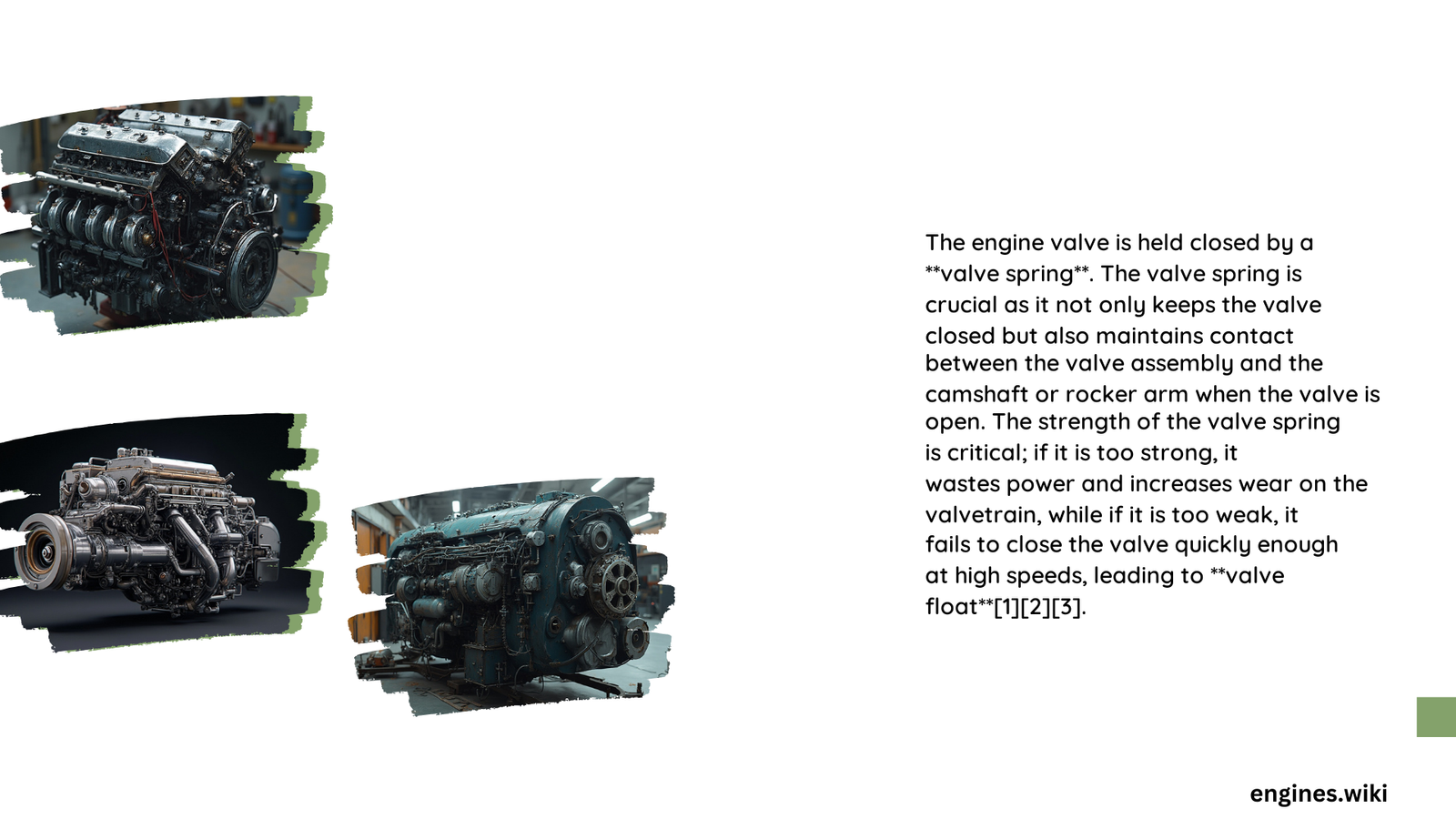What Holds the Engine Valve Closed: A Comprehensive Technical Overview
Summary
Engine valves remain closed through a sophisticated interplay of mechanical components, primarily the valve spring, which exerts consistent tension to maintain a tight seal against the valve seat. This critical mechanism ensures proper compression, prevents gas leakage, and enables efficient engine performance across various operational conditions.
What Creates Valve Closure Force?
Valve Spring: The Primary Closure Mechanism
The valve spring serves as the fundamental component responsible for holding engine valves closed. Its critical characteristics include:
- Tension Specifications
- Typical spring rates: 100-400 lbs/in
- High-performance engines: 250-300 lbs/in range
-
Precise tension prevents valve float and ensures consistent closure
-
Mechanical Function
- Maintains constant downward pressure on valve stem
- Compresses when camshaft pushes valve open
- Rapidly returns valve to closed position after camshaft disengagement
Valve Seat: Precision Sealing Surface
| Component | Material | Angle | Purpose |
|---|---|---|---|
| Valve Face | Hardened Steel | 30-45 degrees | Create gas-tight seal |
| Valve Seat | Special Alloy | Matching valve face | Prevent compression leakage |
How Do Valve Retainers Support Closure?
Valve retainers (valve keepers) play a crucial role by:
– Preventing valve stem detachment
– Maintaining precise valve movement
– Withstanding extreme mechanical stress
– Ensuring consistent valve positioning
What Determines Optimal Valve Closure Pressure?
Factors influencing valve closure effectiveness include:
– Spring tension calibration
– Material quality
– Manufacturing precision
– Engine operational temperature
– Mechanical wear characteristics
Challenges in Maintaining Valve Closure
Critical considerations for engineers and mechanics:
– Monitoring spring tension degradation
– Regular inspection of valve seat condition
– Understanding thermal expansion effects
– Implementing precise manufacturing tolerances
Measurement and Diagnostic Techniques
Tools Required:
– Valve spring compressor
– Precision measurement instruments
– Valve seat cutting equipment
Diagnostic Process:
1. Measure current spring tension
2. Evaluate valve seat condition
3. Check for wear and deformation
4. Determine replacement or adjustment requirements
Technical Specifications
Typical Compression Pressure Range:
– Healthy engines: 100-200 PSI
– Optimal valve closure critical for maintaining these pressures
Conclusion
Effective engine valve closure depends on a complex interaction between valve springs, seats, and retainers. Precision engineering and consistent maintenance ensure optimal performance and longevity.

